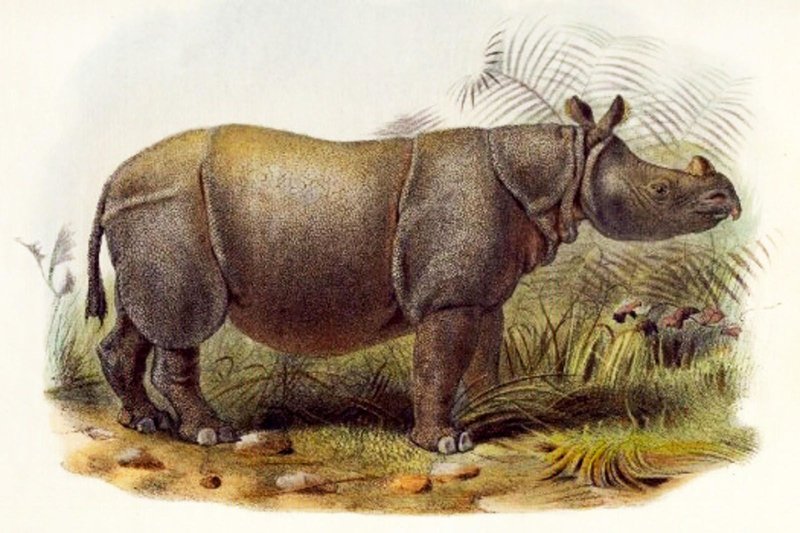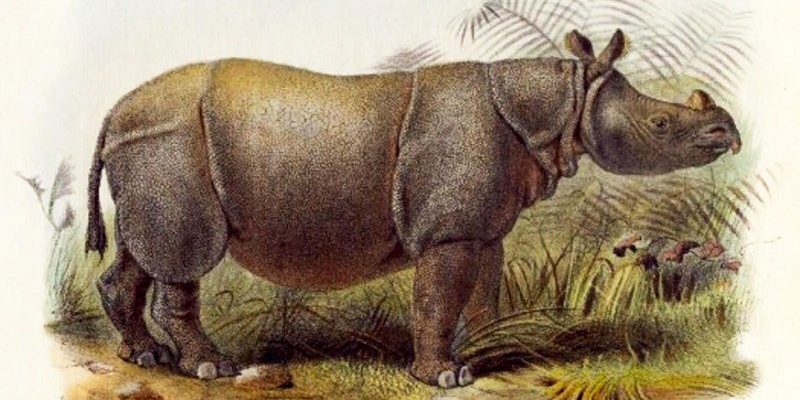
Imagine trying to trace your family tree back to its roots. It’s a bit like that with the Javan rhinoceros. While it might sound simple at first, the history of this remarkable creature is anything but straightforward. Understanding its evolutionary journey gives us insight into not just the rhino’s past, but also its present challenges and the conservation efforts underway to protect it. So grab a cup of coffee, and let’s meander through the evolutionary tale of the Javan rhinoceros.
1. Early Ancestors of the Javan Rhinoceros
The story begins millions of years ago in the Eocene epoch, roughly 50 million years ago. The ancestors of modern rhinoceroses wandered the earth during this time, diverging from other hoofed mammals. Back then, these early creatures were quite different from the rhinoceroses we see today. They had more slender bodies and no horns, and they thrived in lush, tropical environments.
As time went on, these creatures began to adapt to their environments. During the Oligocene epoch, around 30 million years ago, rhinos started to evolve into more recognizable forms. In Asia, early species like *Indricotherium* emerged, which was one of the largest land mammals ever, standing nearly 16 feet tall. These early rhinoceroses set the stage for the evolution of the Javan rhino, demonstrating adaptability and resilience in various climates.
Over millions of years, the lineage that would lead to the Javan rhinoceros faced numerous changes. Climate shifts and environmental transformations led to the emergence of new species while others went extinct. Fast forward to about 10 million years ago, and the first true rhinoceroses began to appear. These would eventually evolve into the *Rhinoceros sondaicus,* known today as the Javan rhinoceros.
2. The Unique Traits of the Javan Rhinoceros
One of the striking aspects of the Javan rhinoceros is its unique morphology. Unlike its African cousins, the Javan rhino has a single horn, which can be up to 25 centimeters long. This horn isn’t just for show; it plays a vital role in protection and foraging. The horn helps the Javan rhino dig for roots and defend itself against predators.
The Javan rhinoceros also has distinct skin folds that give it a rugged, armored appearance. These folds are not just for looks; they help trap moisture and provide a layer of protection against the harsh sunlight of its habitat. With its ability to camouflage in dense jungles, the Javan rhino can evade detection by both predators and humans, making it a true master of survival.
In terms of behavior, the Javan rhino is generally solitary. Males roam larger territories than females, who tend to stay closer to their young. This solitary lifestyle is partly due to the dense forest environment, which makes it challenging for animals to find one another. If you think about it, it makes sense—just like humans, rhinos need their space to thrive.
3. Historical Range and Decline
Historically, the Javan rhinoceros roamed widely across Southeast Asia, from mainland regions to the islands, including Java and Sumatra. There was a time when its numbers were robust, and it thrived in various habitats, including tropical forests, grasslands, and wetlands. Sadly, the Javan rhino’s range has drastically shrunk over the centuries.
As human populations expanded, habitat destruction became a significant threat. Logging, agriculture, and urban development gradually pushed the Javan rhino into a smaller and smaller corner of the world. By the 19th century, their numbers declined sharply due to hunting and poaching for their horns, which were sought after for their supposed medicinal properties.
Today, the Javan rhinoceros is confined to a small area in Ujung Kulon National Park in Java, Indonesia. Here, only about 80 individuals remain, making it one of the rarest large mammals on the planet. This dramatic decline highlights not only the pressures faced by the Javan rhino but also the urgent need for conservation efforts.
4. Conservation Efforts and Challenges
Conserving the Javan rhinoceros poses unique challenges, given its critically low population. Various organizations and governments have worked hard to protect this species, focusing on habitat preservation and anti-poaching initiatives. Ujung Kulon National Park remains a sanctuary where conservationists monitor the rhinos through camera traps and field surveys.
Still, efforts face numerous hurdles. Inbreeding is one concern; with so few individuals left, genetic diversity is diminishing, making the population more susceptible to diseases. Moreover, climate change can alter their habitat, posing risks to their survival. Flooding and rising sea levels threaten the low-lying regions where they live, making it a race against time to secure their environment.
Additionally, there’s the constant threat of poaching. Although protection measures are in place, dedicated efforts are needed to combat illegal activities. Community awareness programs aim to educate local populations about the importance of the Javan rhino in the ecosystem and the benefits of protecting it for future generations.
5. The Future of the Javan Rhinoceros
The future of the Javan rhinoceros hangs delicately in the balance. While conservationists remain hopeful, the reality is that without continued efforts, this species could face extinction. Ongoing research and monitoring are crucial in making informed decisions about their conservation.
One exciting development is the possibility of creating a second population in a new location. This would involve carefully selecting a suitable habitat that meets the rhinos’ needs while minimizing human interference. This endeavor could provide a safety net against disease or catastrophic events that could impact the current population in Ujung Kulon.
In the meantime, every little bit counts. Each time someone engages in conservation efforts or spreads awareness, it adds to the collective action needed to protect this incredible species. Regardless of our proximity to the Javan rhinoceros, everyone can play a role in supporting wildlife conservation.
6. Conclusion: A Call to Action for the Javan Rhinoceros
The evolutionary history of the Javan rhinoceros is a captivating tale of survival, resilience, and the ongoing struggle against extinction. From its early ancestors to its current critical status, each chapter reveals the complexities of nature and the impacts of humanity.
As we dive into the story of the Javan rhino, we uncover not just its past, but also the pressing need for conservation and awareness. This isn’t just about saving a single species; it’s about preserving the biodiversity of our planet. You might be wondering how you can help—educate yourself, share information, or support organizations dedicated to rhino conservation. Together, we can work toward a future where the Javan rhinoceros continues to roam the forests of Java, a living testament to evolution and resilience in the face of adversity.

